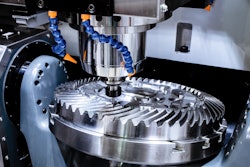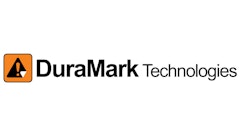
As the world continues to come to terms with the Coronavirus disease (COVID-19) pandemic and economic crisis, many OEMs—and businesses in general—have seen their hope for a quick economic recovery dashed. To make matters worse, a harsh reality has replaced their desire for an economic turnaround. That’s because their liquidity is running low.
With demand for new equipment stumbling along in 2020, OEMs have been struggling to find a way to buoy their cash flow as the demand for new equipment is as weak as it has been since the start of the Great Recession in 2008. This cash crunch has left many OEMs in a difficult position where they must quickly identify opportunities to reduce cost and improve revenue and profits or risk long-term financial stability or worse.
With that in mind, here are three areas OEMs can look at not just in terms of cost-management, but revenue optimization that leaves them in a better position when the COVID-19 pandemic has finally abated.
Shift focus from “transformation” to “evolution”
As recently as this year, there was significant buzz and movement within the manufacturing space as OEMs began to look at shifting to a “product-as-a-service” business model that allows customers to purchase the desired result rather than the equipment that delivers that result.
This new paradigm differs from the traditional model of customers purchasing equipment outright and purchasing parts and service from an OEM or dealer during the product lifecycle. It will enable OEMs to increase revenue, grow margins, and reduce cost while increasing customer satisfaction and market share. While “product-as-a-service” seems to be the way of the future, the current economic environment and the vast complexities inherent when OEMs fundamentally transform their business and service models may slow down any such efforts in the short-term. OEMs will likely opt for a slower “evolution” by focusing on the here and now and revisiting plans for the future when circumstances allow.
Of course, laying the groundwork for future success is essential. But any sort of far-reaching strategy changes can be disruptive to both businesses and their customers. Keeping an eye both on their needs now, as well as minimizing any further upheaval, will help OEMs simplify their operations and drive customer loyalty.
Balance inventory
As OEMs lean more heavily on their after-sales service businesses—thanks to a decline in new order sales—managing inventory will be pivotal. Carrying costs are not only inefficient but can be quite costly. So, OEMs must be able to have the right number of parts in stock. In turn, having an excess of parts in one region and shortage in others can have negative impacts on parts sales, the consumer experience, and the underlying cost structure of providing after-sales service parts.
By looking to balance inventory levels and distribution more efficiently, OEMs can optimize their service parts businesses. They will drive revenue by increasing available sales, avoiding expenditures by liquidating excess, reducing obsolescence through better procurement, all while tightening up extraneous overhead costs that can drain revenue and profits when they are most needed.
 Managing inventory will be pivotal for OEMs in the future.©Yakov – stock.adobe.com
Managing inventory will be pivotal for OEMs in the future.©Yakov – stock.adobe.com
Rethink pricing strategy
Many OEMs have already begun to embrace more advanced pricing tools. But having sophisticated technology in place is only part of the equation. More important is how you use it.
Parts pricing today is very dynamic and can even be tweaked on a minute-by-minute basis to meet KPIs. The problem, however, is that many OEMs are reluctant to fully embrace that they may have to scrap the initially mapped-out KPIs in favor of a new set that will make them more attractive to potential customers. Granted, this doesn’t mean OEMs should “race to the bottom” for pricing, as healthy margins do need to be maintained. However, given cash-flow is drying up, more flexibility in terms of pricing KPIs can help OEMs navigate this challenging time until more normal economic tides return.
Liquidity issues are one of the biggest causes of anxiety for any business. However, while cash might be tight for now, adopting these essential steps can help OEMs manage the current crisis more effectively and set themselves up for success in the post-COVID-19 world.
*This article was written and contributed by Gary Brooks of Syncron Inc.; it originally appeared on our sister website Supply & Demand Chain Executive.















![Hcm Ax Landcros Press Release[32] jpg](https://img.oemoffhighway.com/mindful/acbm/workspaces/default/uploads/2025/11/hcmaxlandcros-press-release32jpg.mAEgsolr89.jpg?ar=16%3A9&auto=format%2Ccompress&fit=crop&h=135&q=70&w=240)

